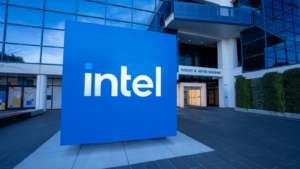Regarding the prospects of a Federal Reserve rate reduction, the S&P 500 rose 14.5% in the first half of the year, driven by technology and communication, which gained 28.2% and 26.7%, respectively. Big-cap growth stocks did well, at 20.7%, while smaller-cap stocks rose slightly.
Value-conscious investors may uncover contrarian stock upgrades that surge against market sentiment, presenting possibilities that have not taken advantage of the 2024 market rally. These upgrades are cheaper than industry titans like Nvidia (NASDAQ:NVDA), which gained 155% in the first half of 2024 because of rising demand for GPUs.
Plus, contrarian stock recommendations against market sentiment are worth considering since experts aren’t always right. Experts anticipated a flat or slightly positive S&P 500 return in 2024. Goldman Sachs (NYSE:GS) predicts a 6% rise to 4,700. With the S&P 500 at 4,500, Morgan Stanley (NYSE:MS) also expected a flat return.
However, the U.S. economy beat expectations; the S&P 500 exceeded 5,500 without concluding the year.
Amid these market happenings, we’ll look at corporations with mixed outlooks recently receiving contrarian stock upgrades, sparking fresh research for these ailing tech titans to benefit from the market rebound.
Palantir Technologies (PLTR)

Palantir (NYSE:PLTR), recognized for its ties to the U.S. military and intelligence, is rated ‘Hold’ based on 13 ratings. The company’s average price target is $22.55, which suggests a 17% downside potential from the present $27.23.
However, Argus Research, which rates the big data business “Buy” and sets a $29 price objective, disagrees.
Analyst Joseph Bonner pointed out that 55% of Palantir’s 2023 income came from strong government contracts. Its growing business sector brought in 45%, with 38% coming from outside the US. Bonner pointed out that Palantir is focusing on making money in AI and finding business solutions.
Palantir’s triumphs in government and commercial contracts support the bullish argument. For the third phase of the TITAN program, which develops new military technologies, PLTR obtained a large U.S. Army contract. Palantir also secured a major DoD CJADC2 contract to build its Maven Smart System. Palantir powers Open DAGIR’s worldwide network.
Its AI platform expanded with 600 pilots in 2023, and 70% increased U.S. commercial income. Palantir and Voyager Space have also launched a major AI relationship to use AI systems in space research and defensive technologies.
The company’s ability to attract attention through contracts and partnerships shows market potential; Palantir expects a big rise in revenue, with growth of at least 30% per year until 2025.
Intel (INTC)

Intel (NASDAQ:INTC) used to be in charge of the chip business, but Nvidia and AMD (NASDAQ:AMD) are taking market share away, souring its outlook. INTC is a “Hold” according to 31 analyst ratings. Twenty-five say the company should be kept, three say it should be bought, and three say it should be sold. This shows the market’s feelings about Intel, which is falling behind Nvidia and AMD.
The experts at Wolfe Research upgraded Intel from “Underperform” to “Peer Perform.” Analysts stressed that growth in server CPUs can’t cover the high costs of Intel’s 5N4Y strategy’s capital and retirement costs by itself. Intel’s manufacturing business won’t break even until 2027, depending on how fast foundries grow. However, Wolfe Research thinks that gross margins will get better in 2025 as Intel buys more tiles and the cost of starting up the business goes down.
Aside from the rating, Intel deserves credit for working hard to compete with Nvidia and AMD. The Xeon 6 processors from Intel are the company’s next version of CPUs for data centers. They are fast and made for AI jobs. Intel’s Arc GPU is 50% faster, and its NPU is four times better. It is based on the next-generation Arc Battlemage design. In the AI business, this lets it go up against Nvidia and AMD directly. Also, Intel’s Gaudi 2 and 3 AI processors cost less than Nvidia’s H100 and AMD’s MI300X GPUs, which are excellent for helping the business regain some market share.
PayPal (PYPL)

PayPal Holdings (NASDAQ:PYPL) receives a lot of analyst love thanks to its 38% payment processing market share. PYPL now has 13 “Buy” and 16 “Hold” recommendations, indicating a mixed outlook.
It’s part of our contrarian stock upgrade research since Susquehanna upgraded PYPL from €˜Neutral’ to €˜Positive’ with a $71 price target.
PayPal hopes to increase market share in small and medium-sized firms making cross-border payments during Christmas shopping via PayPal Checkout with Pay Later and Fastlane. Susquehanna believes PayPal will exceed transaction margin dollars and adjust EBIT dollar predictions in the coming years, and the stock is a suitable entry point.
Simultaneously, PayPal has introduced six AI-powered commerce options to increase revenue: Fastlane’s one-click guest checkout streamlines and boosts shop conversions. PayPal also introduced Smart Receipts, which employ AI to suggest and reward, and Advanced Offers, which target performance-based advertisers. €‹
PayPal launched the Solana (SOL-USD) blockchain stablecoin PayPal USD to boost digital trade. Finally, the new PayPal advertising platform customizes ads using its huge consumer and merchant data.
On the date of publication, Faizan Farooque did not have (either directly or indirectly) any positions in the securities mentioned in this article. The opinions expressed in this article are those of the writer, subject to the InvestorPlace.com Publishing Guidelines.
On the date of publication, the responsible editor did not have (either directly or indirectly) any positions in the securities mentioned in this article.
Faizan Farooque is a contributing author for InvestorPlace.com and numerous other financial sites. Faizan has several years of experience in analyzing the stock market and was a former data journalist at S&P Global Market Intelligence. His passion is to help the average investor make more informed decisions regarding their portfolio.
